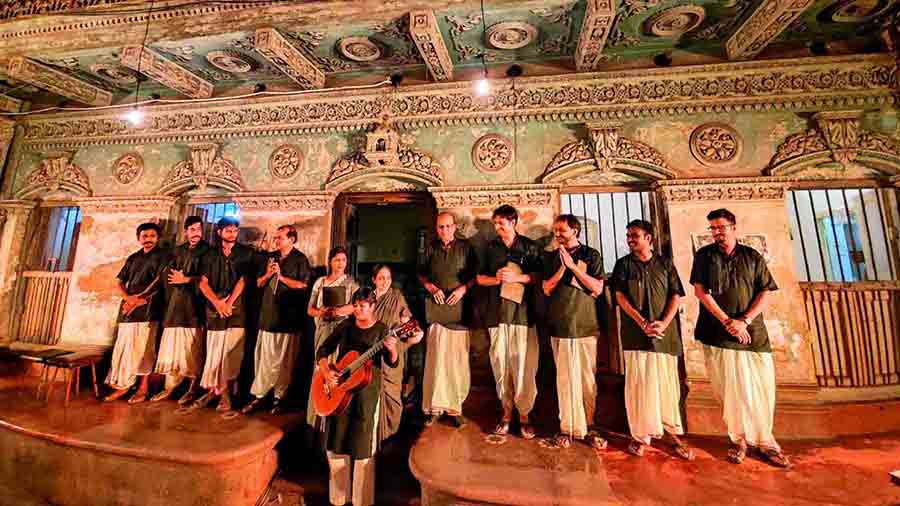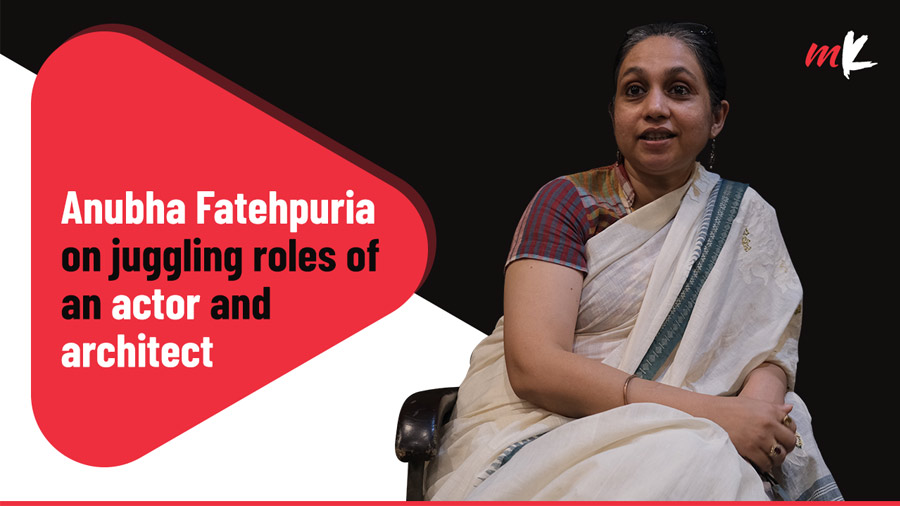On September 16, a hundred people gathered in a narrow north Kolkata lane. It wasn’t an examination centre for a government job. Or a political rally. It was for a play.
37A, Baranashi Ghosh Street, also known as Tandon Bari, has been a family home for 94 years. On Saturday, it opened itself up as a performance stage. Over the course of 70 minutes, the writings of Sharad Joshi, Rabindranath Tagore and Saadat Hasan Manto came alive amidst the glass windows and the elegant facade. Everyone in the audience knew that they were witnessing something special.
Titled, Kyunki champa ka vriksh utne hi dino mei phool deta hai, jitna tab deta thaa, the play is the first in a series titled ‘Heritage x Theatre — Of Spaces & Other Stories’, created by actor and architect Anubha Fatehpuria. Presented by Padatik and Trisys Foundation, the series will comprise a total of six episodes over the next 12 months, with each one exploring a different old Kolkata architectural relic through theatre.
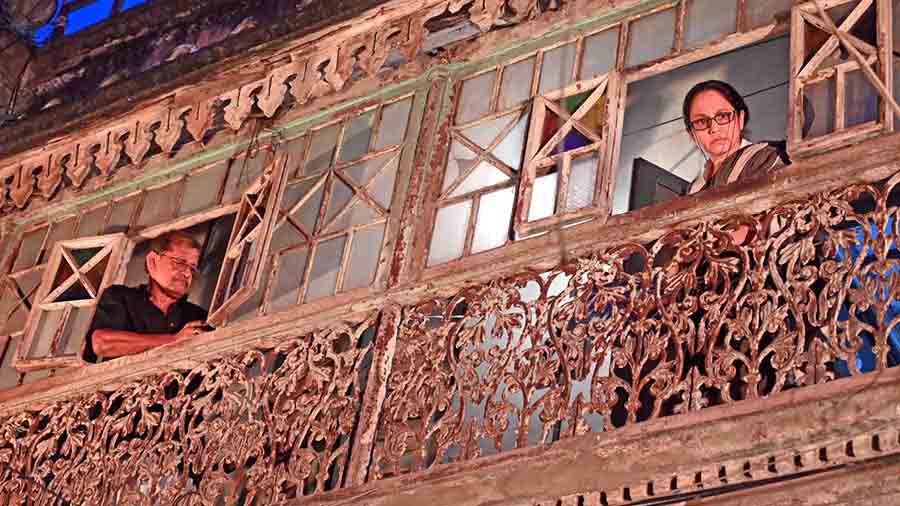
In addition to being an actor, Anubha Fatehpuria (right), is an architect. Heritage x Theatre is her and Mudar Patherya’s brainchild to preserve the city’s architectural wonders
The seeds of this production were sown back during the pandemic, when Fatehpuria found herself moved by pictures of old Kolkata buildings, and created a series of eight episodes titled Of Spaces, where elements like staircases, arches and balconies were personified as characters. “These productions were created to sensitise architecture students and open them up to new ways of seeing what they were studying. I wanted them to imagine that staircases and arches were speaking to them,” she said.
Since then, Fatehpuria was determined to blend theatre with architecture, and was constantly looking for innovative ways to do so. This year, she found the perfect collaborator in My Kolkata columnist and head of Trisys Foundation, Mudar Patherya. “Mudarji had come to watch our play, Kaagaz ke Gubbare at Padatik, and told me to consider performing it at a heritage building. When I looked at the space, I found immense potential in blending heritage and theatre,” added Fatehpuria, who is the programme director at Padatik.
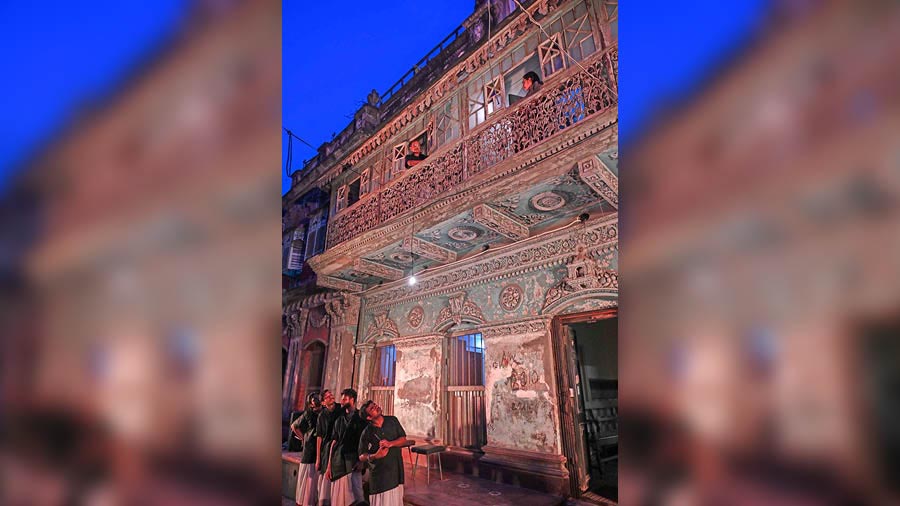
The cast used every corner of Tandon Bari’s exterior, from the windows to the facade to the collapsible gate, in the play
She visited Tandon Bari for the first time a month ago, and the house instantly spoke to both her architectural and theatre sensibilities. She knew that there were stories aching to be told through its structure, and conceived Kyunki champa ka vriksh utne hi dino mei phool deta hai, jitna tab deta thaa. However, Fatehpuria didn’t just want the building to remain a setting. “I wanted to use the building as a character, and we incorporated it into the text,” she said.
True to her vision, the cast used every corner of Tandon Bari’s exterior, from the windows to the facade to the collapsible gate in the play. Nuanced narratives around capitalism, marriage and nature were conveyed by the cast gathered around the chaukhat of an old door. A guitar was leisurely strummed while people watched. A production about the changing times we live in, where the setting itself froze time.
“Performing in auditoriums is a Western concept, while the baithaki style of performing has been a part of our culture for a long time. Even Tagore would host plays in the aangan of Jorasanko. We wanted to bring this culture back in our own small way,” explained Fatehpuria. Her words echo the intimacy of this style of theatre, where an entire neighbourhood gathered together to watch art unfold. Bystanders gaped in amazement, their chores lay forgotten. Scooters slowed down to catch a glimpse. The audience felt like a part of the production.
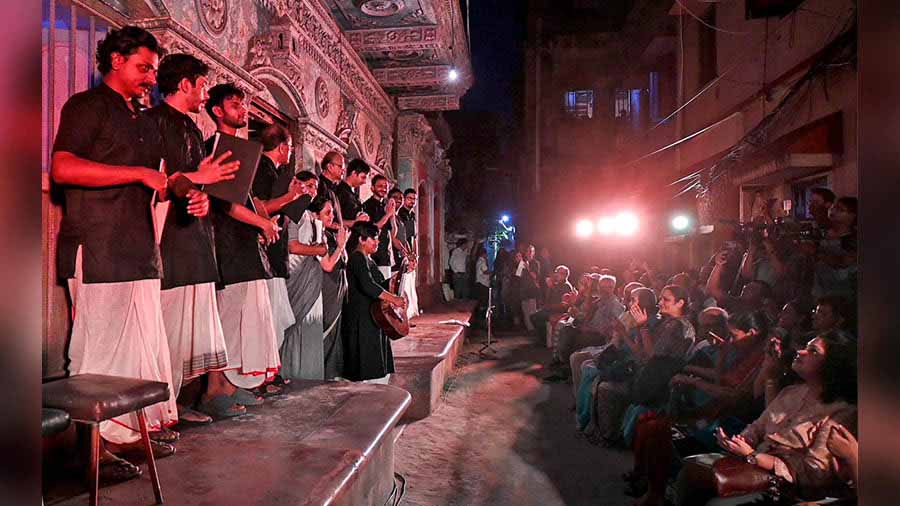
The play incorporated Tandon Bari not just as a backdrop, but as a character
As the performers bowed and thanked the audience, they were greeted by a spontaneous standing ovation. Patherya, who was the event conceptualiser and partner, chuckled, “They often say that Kolkata is a dead city. How can it be dead if people are turning up on a Saturday to watch a play in a lane that can’t even be found on Google Maps?” He also assured the audience that this wouldn’t be a one-off, and Heritage x Theatre was only getting started. “This represents the start of a series of theatre performances to be conducted every two months across heritage homes.”
Fatehpuria stated that their vision was to open up these structures as alternate performing spaces that could be utilised by the artist community as a parallel to the auditorium setup. She said, “Even after a long wait, if an artiste gets an auditorium slot, it is very difficult to fill a 500-seater. Most artistes can’t afford advertising. So even if you do it once, can you do it again?” She remarked that riyaz, or practice, was the most important thing for a performer, and encouraged performers to embrace doing multiple shows in smaller spaces.
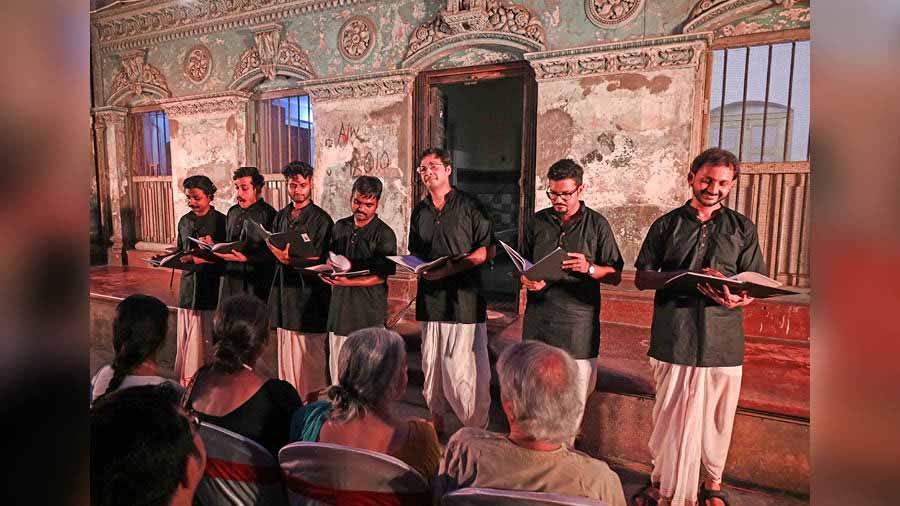
Fatehpuria stated that their vision was to open up these structures as alternate performing spaces that could be utilised by the artistic community as a parallel to the auditorium setup
In order to bolster this spirit, Fatehpuria invited performers to get in touch with the homeowners and seize the opportunity. “We hope that at the end of this year, Kolkata will have six new performance spaces. While this is just a part of Heritage x Theatre, if the artist community comes together, we can easily locate hundreds of such spaces. Kolkata is full of heritage,” she smiled.
At its core, this initiative is a give-and-take. Fatehpuria doesn’t just want it to open new stages for performers, but also support the maintenance and repurposing of the city’s heritage properties. “The objective is to draw attention to remarkable and often endangered properties whilst generating income for the home-owners. This is an initiative to preserve the spirit of the city and its built heritage,” Fatehpuria signed off.
The next production of Heritage x Theatre is slated for October 29, at Dhurjati Dham in Belgachia.
